The Philly Fed's Aruoba-Diebold-Scotti Business Conditions Index (hereafter the ADS index) is a fascinating but relatively little known real-time indicator of business conditions for the U.S. economy, not just the Third Federal Reserve District, which covers eastern Pennsylvania, southern New Jersey, and Delaware. Thus it is comparable to the better-known Chicago Fed's National Activity Index, which is updated monthly (more about the comparison below).
Named for the three economists who devised it, the index, as described on its home page, "is designed to track real business conditions at high frequency."
The index is based on six underlying data series:
- Weekly initial jobless claims
- Monthly payroll employment
- Industrial production
- Personal income less transfer payments
- Manufacturing and trade sales
- Quarterly real GDP
The accompanying commentary goes on to explain that "The average value of the ADS index is zero. Progressively bigger positive values indicate progressively better-than-average conditions, whereas progressively more negative values indicate progressively worse-than-average conditions."
The first chart shows the complete data series, which stretches back to 1960. I've highlighted recessions and the current level of this daily index through its latest data point.
To facilitate comparison with the Chicago Fed's National Activity Index (CFNAI), I've created a 91-day moving average of this daily index. Why 91 days? The CFNAI is updated monthly, but the metric that gets the most attention by the Chicago Fed economists is its three-month moving average. They've even coined an acronym for it, the CFNAI-MA3. Thus I've used 91 days as a comparable smoothing of the Philly Fed ADS index. In the ADS 91-day MMA chart below I've highlighted recessions and the value of the smoothed index at recession starts.
As we can readily see, the current level of this index is higher than it was at the onset of all recessions with the exception of the one in 1973-1975 that was triggered by the Arab Oil Embargo and subsequent gasoline shortages.
Now that we've examined the ADS index across several decades, let's take a closer look at the 21st century. I've included both the daily index and its 91-day moving average. For a better since of how the economy is doing since the last recession, I've added a linear regression through the 91-day MA since 2010 with dashed lines parallel to the regression highlighting a high-low channel.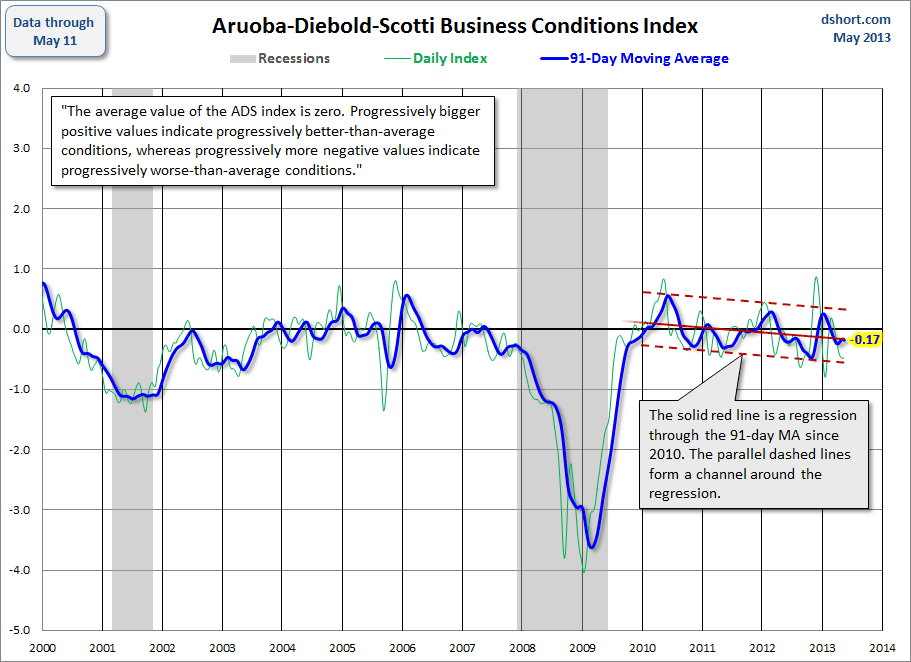
A move beyond the downside of the channel in the chart above would be a recessionary signal, and a move to the upside would probably silence many of the pundits who see the economy as already in a mild recession. Here is a closer look at that channel.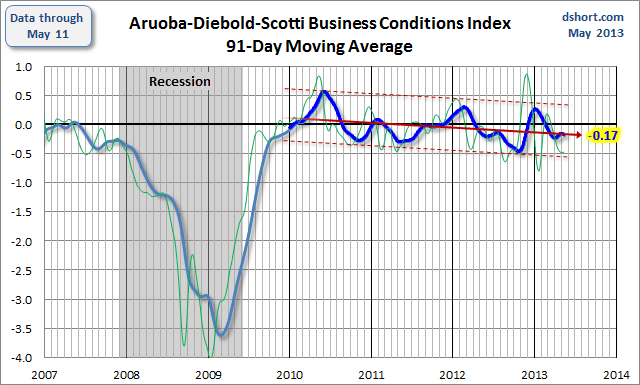
Now let's compare the Philly Fed's Business Conditions Index with the Chicago Fed's National Activity Index (CFNAI), which reaches back to March 1967. (See also my latest monthly update for the CFNAI here.) The CFNAI is based on 85 economic indicators from four categories:
- Production and income
- Employment, unemployment and hours worked
- Personal consumption and housing
- Sales, orders and inventories
For a close look at the four components, see this monthly update.
Here is the afore-mentioned CFNAI-MA3.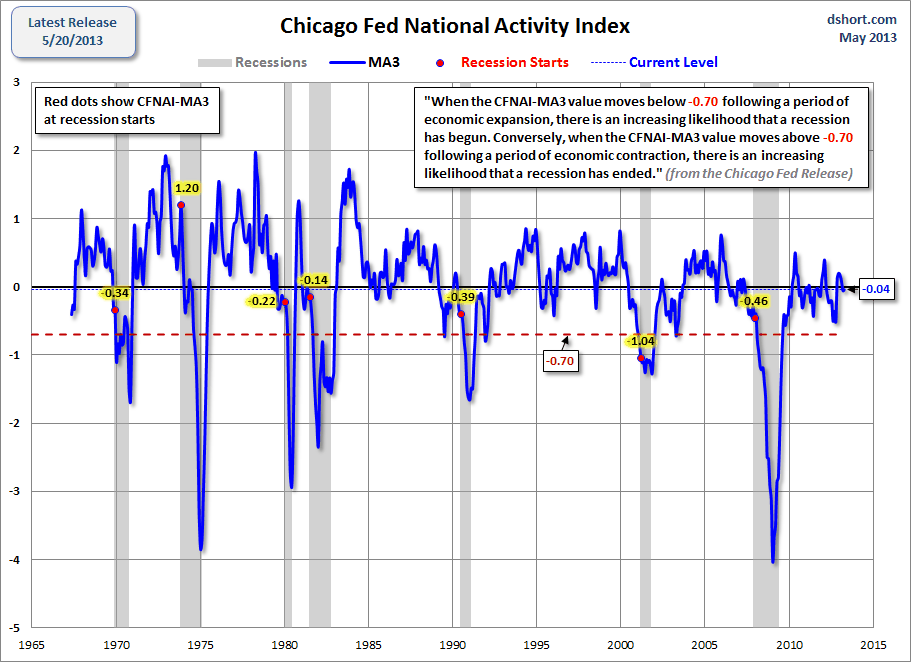
Even the most cursory examination shows the reasonably close correlation of these two indicators of the general economy. Moreover, the recession overlays for both also confirm their general accuracy in illustrating major economic downturns over the last few decades. Of course, these aren't real-time calls, because both are subject to revisions.
The next chart reveals a trend in the ADS index — one that might not be obvious at first glance. Let's let Excel draw linear regressions through the data series.
Compare the slope of the regression with its counterpart in the CFNAI-MA3.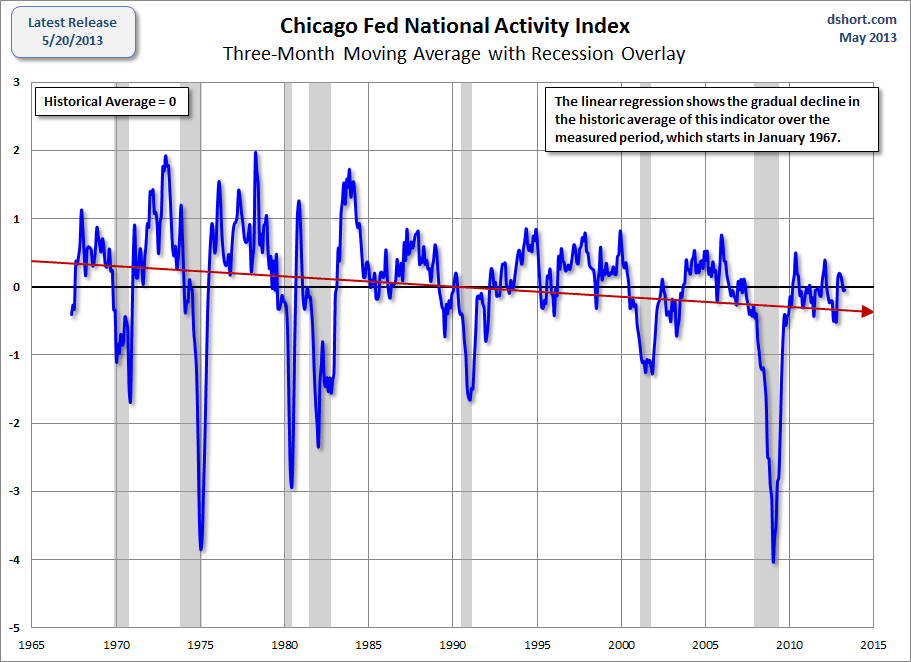
This chart duo indeed tells us something about the long-term trend toward slowing growth in post-industrial economy of the United States. In fact, we see a similar trend in real GDP. Note the dashed red line in the chart below: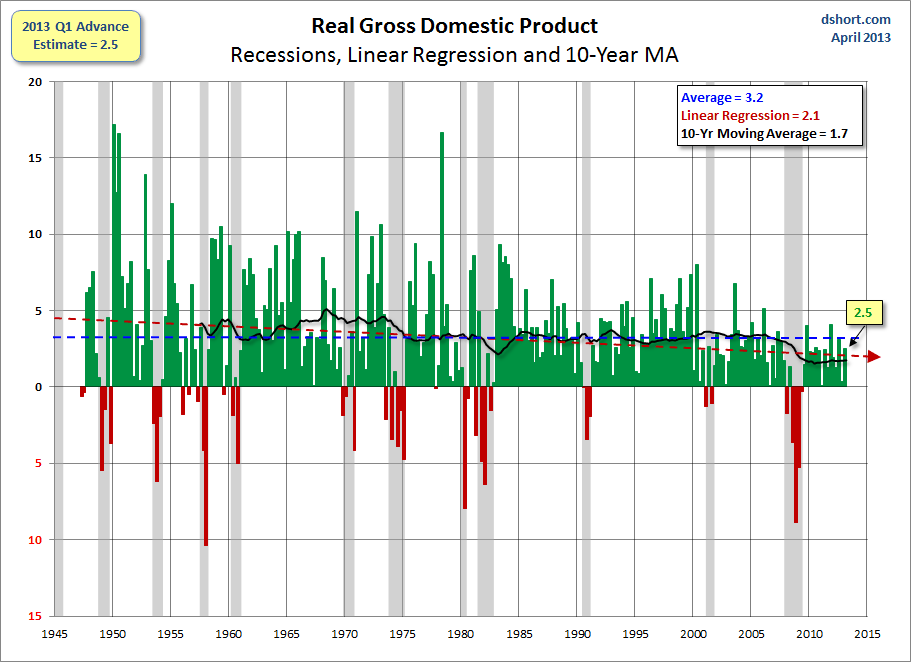
I'll continue to post periodic updates of this overview of the Philly Fed ADS Index.
